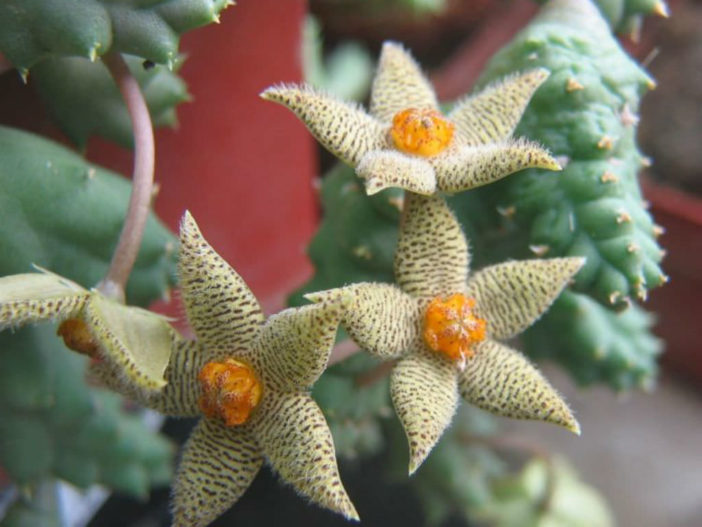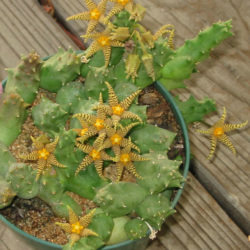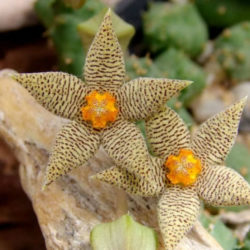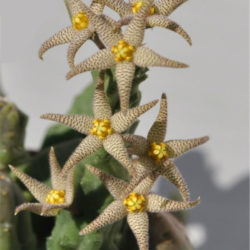Scientific Name
Piaranthus geminatus subsp. decorus (Masson) Bruyns
Synonym(s)
Caralluma decora, Ceropegia geminata subsp. decora, Obesia decora, Orbea decora, Piaranthus decorus, Stapelia decora, Stisseria decora
Scientific Classification
Family: Apocynaceae
Subfamily: Asclepiadoideae
Tribe: Ceropegieae
Subtribe: Stapeliinae
Genus: Piaranthus
Description
Piaranthus geminatus subsp. decorus is a succulent plant with 4-angled, tuberculate, green stems that spreads over the ground, forming a dense mat. The stems can grow up to 2 inches (5 cm) long and 0.8 inches (2 cm) thick.
Flowers are star-shaped, up to 1.6 inches (4 cm) across, and appear in clusters of up to 5, opening together at branch tips in fall. The corolla is densely hairy, creamy-yellow to greenish-yellow, with bright to dark red-brown or brown dots, patches, or transverse bands.
Origin
Piaranthus geminatus subsp. decorus is native to South Africa (Northern Cape and Western Cape).

Hardiness
USDA hardiness zones 10a to 11b: from 30 °F (−1.1 °C) to 50 °F (+10 °C).
How to Grow and Care
Stapeliads are relatively easy to grow. However, they should be treated as outdoor plants as they will easily rot indoors and cannot flower without exposure to outdoor temperature fluctuations. They should be grown under cover so that watering can be controlled. Stapeliads require a reasonable amount of sunlight to promote flowering and maintain a well-shaped plant. Very shady positions will produce very poor flowering.
These plants come from climates where they survive extremely high temperatures in the summer months, so most growth is in spring and fall, with flowering in fall when the weather starts to cool down. In the growing season, water is in moderation when needed, ensuring soil is fairly dried out between waterings. Do not water between late fall and early spring.
The easiest and best way to propagate Stapeliads is from stem cuttings which can be taken virtually throughout the year. Using seeds is also a method of propagation.
See more at How to Grow and Care for Stapeliads.
Links
- Back to genus Piaranthus
- Succupedia: Browse succulents by Scientific Name, Common Name, Genus, Family, USDA Hardiness Zone, Origin, or cacti by Genus
Photo Gallery
Click on a photo to see a larger version.



